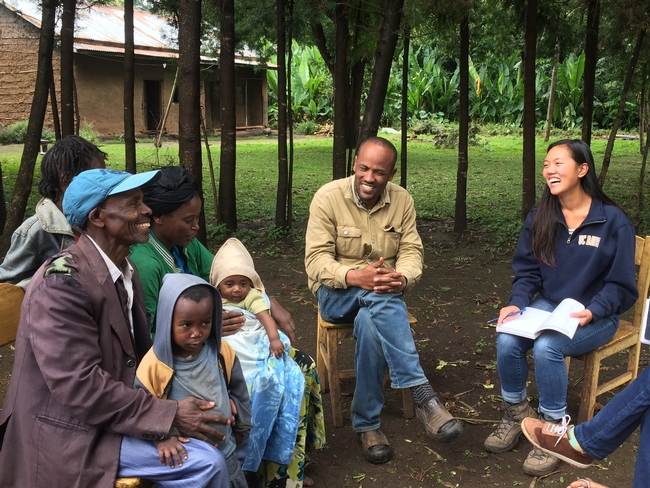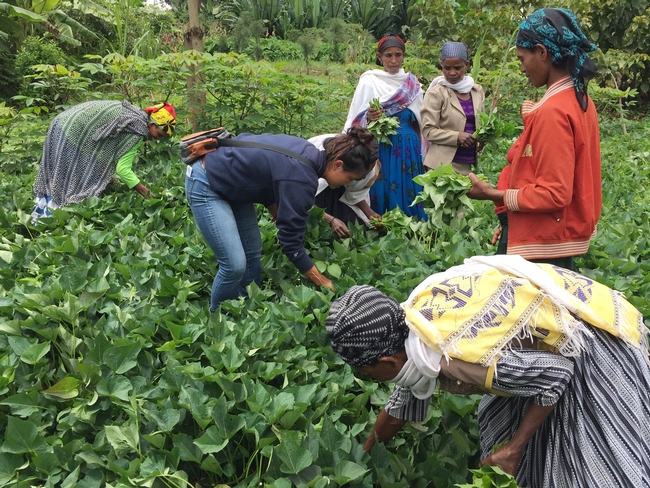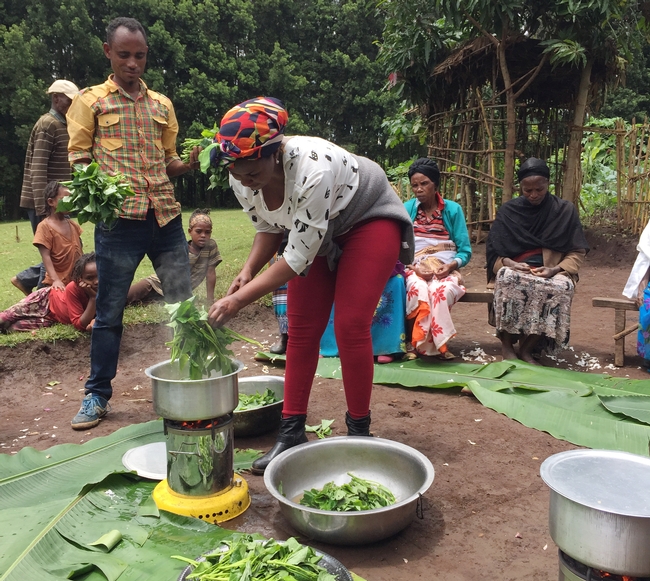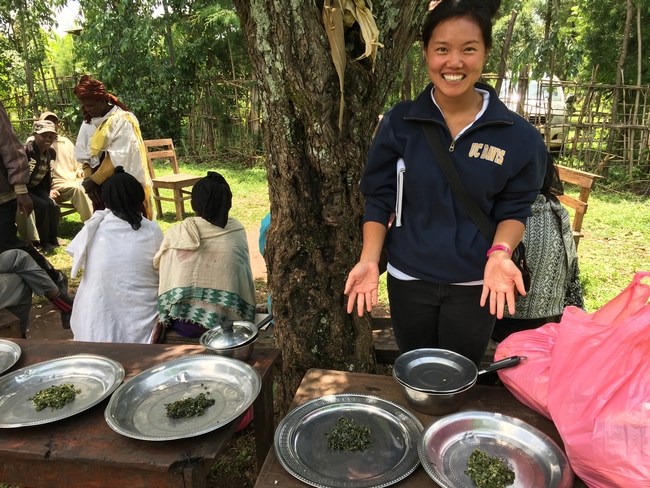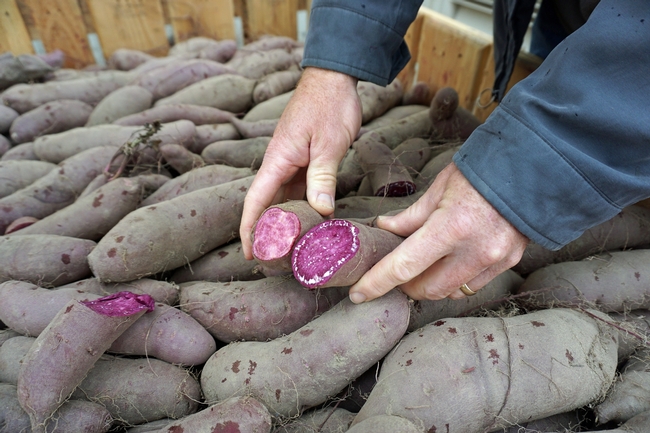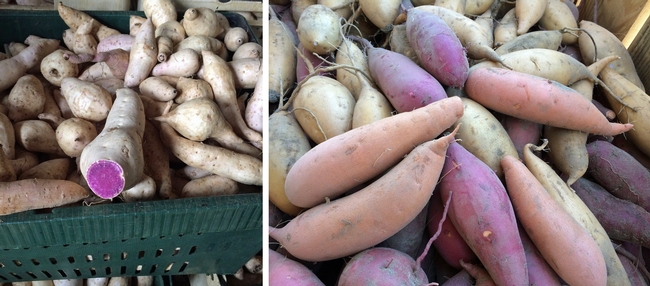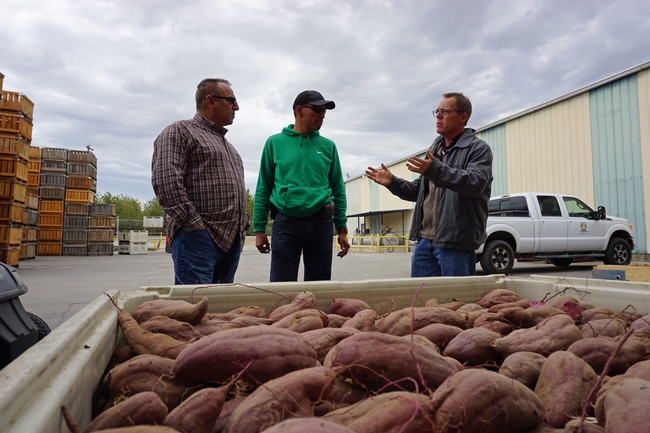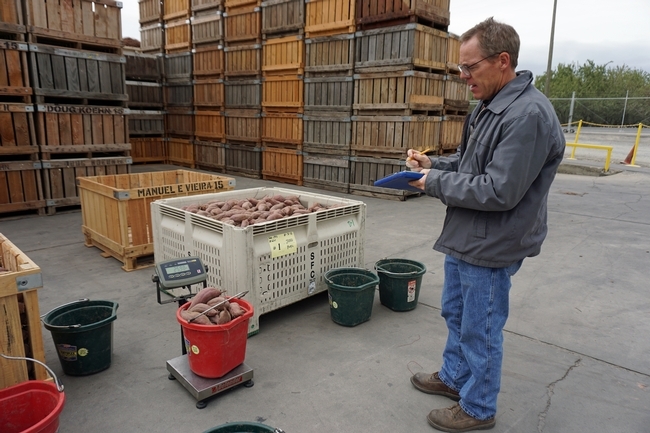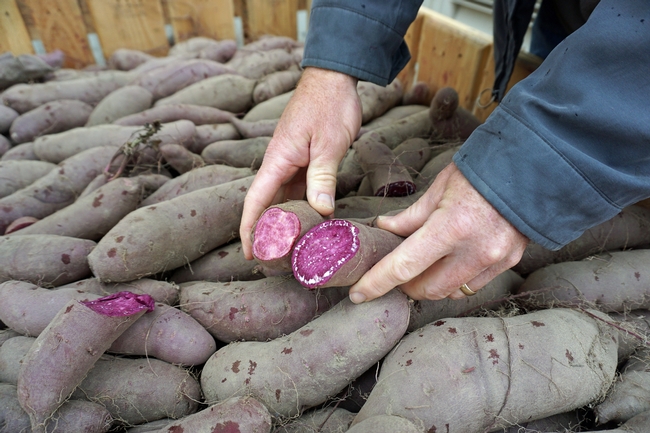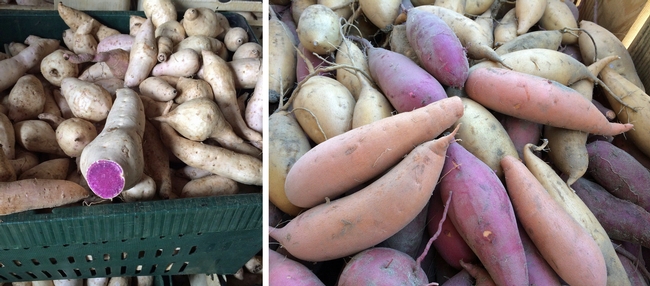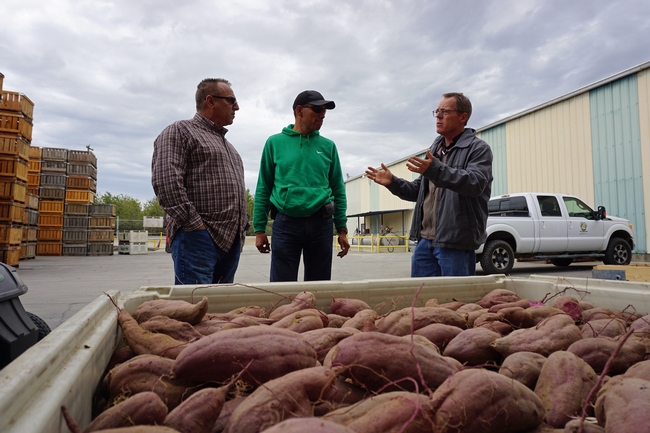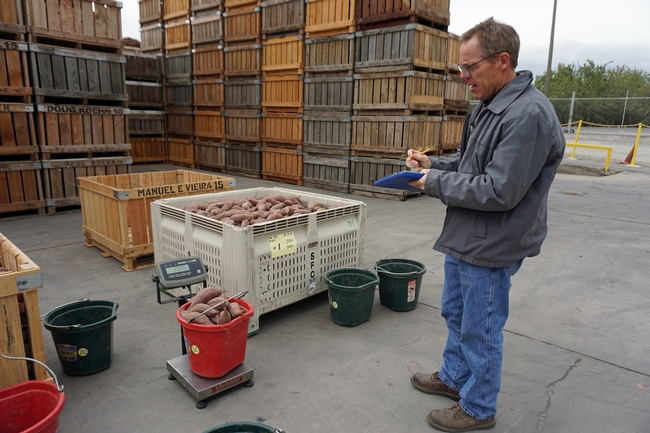Posts Tagged: potato
Trying leafy greens from a sweet potato plant
This time of year, it can be hard to resist the pull of sweet potatoes — roasted, mashed with butter, and topped with a combination of delectable treats from maple syrup to pecans to marshmallows. But did you know that the green leaves of the sweet potato plant also have the potential to be a tasty, nutritious food?
In Ethiopia, where sweet potatoes can be a staple crop, UC Davis graduate student Lauren Howe recently helped farmers taste test the leaves and consider this familiar crop in a new culinary light.
Watch a video to learn how to prepare sweet potato leaves:
The leaves of this drought-tolerant plant offer farming households there an alternative — and nutritious — food in the lean season, while they are waiting for its starchy, tuberous roots to be ready to eat. Introducing sweet potato leaves as a food option is intended to help farmers better diversify their families' diets, to include a wider variety of vegetables in addition to staple foods, especially during the dry season.
Lauren shared her experiences in Ethiopia on the Agrilinks website, where she recently won the Agrilinks Young Scholars blog contest with her writing and a short video from the field.
Boots on the ground with sweet potato farmers in Ethiopia
Lauren traveled to Ethiopia this summer to work with an organization called Send A Cow Ethiopia (SACE), on a Trellis Fund project. As part of the Horticulture Innovation Lab, each Trellis Fund project connects an organization in a developing country with a grad student from a U.S. university, to work together to benefit local farmers, while building the capacity of both the local organization and the student.
In Ethiopia, SACE helped Lauren better understand local contexts by connecting her with farming households to interview about their current farming practices and the role of sweet potatoes in their diets.
Later they traveled to meet with a group of about 25 farmers in the Ukara community to harvest leaves, cook together and discuss their perceptions of the leaves as a vegetable option.
Reflecting on taste tests, new foods, and rural communities
Lauren's own passion for food and witnessing how food can help build community is an important part of her reflection on this experience:
"This project is about creating tasty dishes to persuade people about the nutritional benefits of a new ingredient. It is gathering families, friends and neighbors to sit down to a communal meal (already a strong Ethiopian practice), breaking bread together, sharing stories, experiences and hopes for the future."
For more, go read the rest of Lauren's blog post and check out her short video too.
Background and related international agricultural research
Lauren's experience with a Trellis Fund project in Ethiopia was supported by the Horticulture Innovation Lab, a research program led by Elizabeth Mitcham of the UC Davis Department of Plant Sciences, with funding from the U.S. Agency for International Development. With a focus on fruit and vegetable innovation, the Horticulture Innovation Lab seeks to empower smallholder farmers in developing countries to earn more income and better nourish their communities — as part of the U.S. government's global Feed the Future initiative.
Past research from the Horticulture Innovation Lab has focused on other leafy greens, specifically African indigenous vegetables, and also on sweet potatoes themselves (orange-fleshed sweet potatoes, that is). Though the program has not done in-depth research on sweet potato leaves for human consumption beyond this small Trellis Fund project, you can find more information about eating sweet potato leaves and tips in this bulletin from the University of Arkansas Cooperative Extension, and a wealth of information about sweet potato farming and gardening from the University of California Vegetable Research and Information Center.
Related Food Blog posts:
- New reason to give thanks for sweet potatoes
How orange-fleshed sweet potatoes are making a difference in some African countries - More African indigenous vegetables on more plates
A brief look at some leafy greens popular in Eastern Africa - Connecting with farmers over pineapple postharvest practices
Another Trellis student experience with a video - ‘Local' farm inspiration from half a world away
A UC Cooperative Extension specialist reflects on his time as a Trellis student
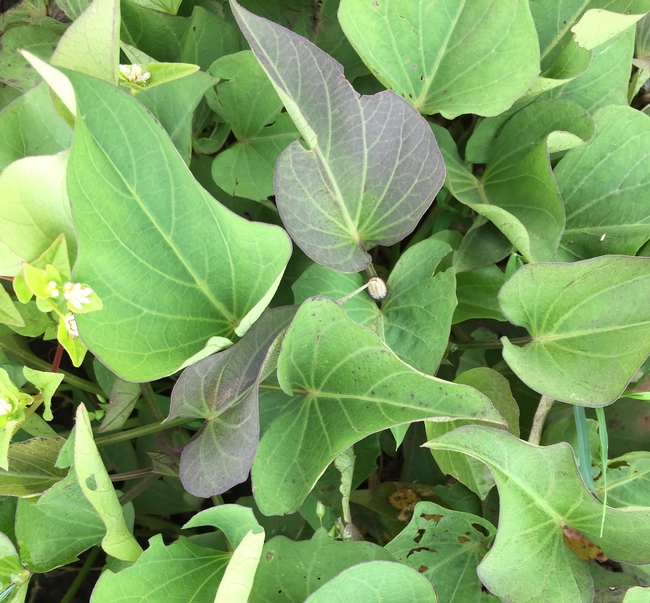
Sweet potato leaves in Ethiopia - Horticulture Innovation Lab photo by Lauren Howe/UC Davis
Los camotes de un vibrante morado son una saludable sorpresa en el Día de Acción de Gracias
Los camotes endulzados –chorreando mantequilla, azúcar morena y nueces – o una cacerola de camotes machacados y cubiertos de malvaviscos tostados - son platillos tradicionales en la mesa del Día de Acción de Gracias.
Estos ricos platillos contradicen la naturaleza dulce de los camotes, los cuales son tubérculos ricos en nutrientes y con un bajo nivel glicémico que pueden ser parte de una dieta saludable todo el año.
Un estudio realizado por Scott Stoddard, asesor de Extensión Cooperativa de UC, tiene como objetivo convertir a los camotes en un alimento aún más saludable y atractivo. Stoddard trabaja junto con productores de camotes del condado de Merced para explorar si los camotes de cáscara de tono morado oscuro y pulpa de un morado brillante, conocidos en inglés como purple/purples (morado/morados), pueden ser cultivados por más granjeros en California. El inusual color y mayores beneficios a la salud comandan un mayor precio, abriendo un potencial nicho en el mercado.
“Los camotes de pulpa morada contienen beta-caroteno, como las variedades de color naranja que son más comunes, además de antocianinas”, dijo Stoddard. “Es como comerse un puñado de arándanos azules con su camote”.
California es un importante productor de camotes. Alrededor de un 80 por ciento del cultivo en este estado – 16,000 acres – se realiza en el condado de Merced, en granjas con superficies que van desde cinco acres a varios miles de acres. En el 2015, el valor del cultivo en el condado de Merced fue de 195 millones de dólares. En el condado de Kern existen alrededor de mil acres de cultivo y dos mil en el de Stanislaus. Estas ubicaciones cuentan con suelos arenosos y arenosos limosos ideales para que los camotes puedan desarrollar su distintiva forma y cáscara lisa.
Los camotes de pulpa morada no son comunes, pero han existido desde hace ya un buen tiempo. Por ejemplo, son el principal tipo de camote que se cultiva en Hawaii. Hace varios años, los cultivadores del condado de Stokes, N.C., seleccionaron un cultivar particularmente hermoso y sabroso al que nombraron camote Stokes y lo comercializaron a nivel nacional a través de Frieda's Specialty Produce. En California, A. V. Thomas Produce, de Livingston, adquirió un acuerdo exclusivo con la compañía para cultivar y comercializar el camote Stokes purple/purples.
“El número de acres de Stokes se ha realmente expandido en pocos años”, mencionó Stoddard. "Existe mucho interés en los camotes de pulpa morada por parte del consumidor".
Eso no cierra la puerta del camote purple/purples a otros granjeros de California interesados en el nicho. Stoddard conduce pruebas de campo en cooperación con granjeros locales que incluye el purple/purples. En una de las pruebas, se están cultivando 50 tipos de camotes de colores diferentes, para poder determinar si cuentan con las características claves necesarias para producirlos localmente. De allí, él elige un número limitado para cultivar en pruebas replicadas, con el propósito de determinar su potencial para obtener una producción grande, que puedan ser almacenados bien y desarrollar el tamaño, forma, color y sabor adecuados. De estos, solo uno de los camotes purple/purples pasó a la prueba replicada.
“En algunos purple/purples, el sabor puede ser apagado o amargo”, indicó Stoddard. “De esos nos deshicimos inmediatamente”.
Uno de los cultivares en el estudio de Stoddard, que recibe el código experimental L-4-15-P, fue producido en el 2014 por Don La Bonte, un productor de plantas de la Universidad del Estado de Luisiana, en Baton Rouge. Este camote cuenta con algunos buenos atributos, pero carece del color uniforme e intenso de la variedad Stokes.
“Desafortunadamente, probablemente no es lo suficientemente bueno para desplazar a Stokes”, dijo Stoddard. “Es un buen inicio, pero necesitamos seguir estudiando al purple/purples para encontrar una variedad que ofrezca resistencia a las enfermedades, una buena cosecha y pulpa de color morado intenso y consistente".
Un buen alimento
Los camotes pueden comerse crudos o cocidos. Para comerlos crudos, simplemente quíteles la piel, córtelo en palitos y sírvalos con aderezo ranch bajo en grasa o puré de manzana. Raye camotes frescos sin cocer y agréguelos a burritos, tacos o ensaladas para darle un toque nutritivo y crocante.
Los camotes cocidos pueden comerse durante el desayuno, almuerzo y cena, con cáscara y todo, solos o con un poco de mantequilla.
Una manera rápida de preparar esta verdura es en el microondas. Lávelos y séquelos. Pínchelos con la punta de un cuchillo en dos o tres lugares. Cocine en alta potencia durante cinco minutos. Deles la vuelta. Cocine durante otros cinco minutos, más o menos.
El experto en camotes de Extensión Cooperativa de UC, Scott Stoddard, señaló que él prefiere los camotes horneados.
“Es mucho mejor hornearlos”, mencionó el experto. “Al hornearlos les da tiempo de convertir el almidón en maltosa”.
Los camotes están compuestos en su mayoría de almidón, pero contienen una enzima especial que cuando se les cocina, convierte el almidón en maltosa. Cocerlos lentamente en el horno convencional da tiempo a esta conversión, dándole un sutil sabor dulce acaramelado.
Para hornearlos, precaliente el horno a 400 grados. Cubra la rejilla inferior del horno con papel aluminio, luego pinche los camotes con un tenedor y colóquelos directamente en la rejilla media, arriba de la que está cubierta con papel aluminio. Hornee camotes de dos a tres pulgadas de diámetro, durante 45 minutos.
Vibrant purple sweet potatoes are a healthful Thanksgiving surprise
Candied sweet potatoes – dripping with butter, brown sugar and pecans – or a casserole of mashed sweet potatoes smothered with toasted marshmallows are common sides on the Thanksgiving table. These rich dishes belie the true nature of sweet potatoes, which are nutrient packed, low-glycemic root vegetables that can be a part of a healthy diet year round.
Research by UC Cooperative Extension advisor Scott Stoddard is aimed at making sweet potatoes an even more healthful and attractive food. Stoddard is working with sweet potato growers in Merced County to see if sweet potatoes with dusky purple skin and vibrant purple flesh, called purple/purples, can be grown by more farmers in California. The unusual color and health benefits command a higher price, opening a potentially profitable niche market.
“Purple flesh sweet potatoes have beta-carotene, like the more common orange varieties, plus anthocyanins,” Stoddard said. “It's like eating a handful of blueberries with your sweet potato.”
California is a significant producer of sweet potatoes. About 80 percent of the California crop – 16,000 acres – is grown in Merced County, on farms ranging from 5 acres up to several thousand acres. In 2015, the crop's value in Merced County was $195 million. About 1,000 acres are grown in Kern County and 2,000 acres in Stanislaus County. These locations have the sandy and sandy-loam soils ideal for sweet potatoes to develop their distinctive shape and smooth skin.
Sweet potatoes with purple flesh are not common, but they have been around for quite some time. They are the main type of sweet potato grown in Hawaii, for example. Several years ago, growers in Stokes County, N.C., selected a particularly beautiful and tasty cultivar, naming it the Stokes Sweet Potato and marketing nationwide with Frieda's Specialty Produce. In California, A. V. Thomas Produce in Livingston acquired an exclusive agreement with the company to grow and market Stokes purple/purple sweet potatoes.
“The number of acres of Stokes has really expanded in just a few years,” Stoddard said. "There is a lot of consumer interest in purple-fleshed sweet potatoes."
That doesn't close the door on purple/purples for California's other growers interested in the niche. Stoddard conducts field trials in cooperation with local farmers that include purple/purples. In one trial, 50 types of sweet potatoes of many different colors are being grown to determine whether they have key characteristics needed for local production. From there, he selects a limited number to grow in replicated trials, to determine their potential to produce a high yield, store well, and develop good size, shape, color and flavor. Of these, only one purple/purple made it into the replicated trial.
“In some purple/purples, the flavor can be off, or bitter,” Stoddard said. “We get rid of those right away.”
One of the cultivars in Stoddard's study, which goes by the experimental code number L-14-15-P, was bred in 2014 by Don La Bonte, a plant breeder at Louisiana State University, Baton Rouge. The potato has some good attributes, but lacks the uniform deep purple color of the Stokes variety.
“Unfortunately, it's probably not good enough to displace Stokes,” Stoddard said. “It's a good start, but we have to continue screening purple/purples to find a variety that offers disease resistance, good yield, and consistent deep purple flesh color."
Good eats
Sweet potatoes can be eaten raw or cooked. To eat raw, simply peel, cut into sticks and serve with low-fat ranch dressing or apple sauce for dipping. Grate fresh, uncooked sweet potatoes and add to burritos or tacos or sprinkle on salads for a sweet, nutritious crunch.
Cooked sweet potatoes can be eaten for breakfast, lunch or dinner, skin and all, plain or with a small pat of butter.
Microwaving is a great way to quickly prepare the vegetable. Wash potatoes and pat dry. Prick skin with a knife in 2 to 3 places. Cook on high for 5 minutes. Turn over. Then cook for another 5 minutes, more or less.
UC Cooperative Extension's sweet potato expert Scott Stoddard says he prefers his sweet potatoes baked.
“Baked is way better,” he said. “Baking gives time to convert the starch to maltose.”
Sweet potatoes are mostly starch, but have a special enzyme that breaks down starch into maltose when cooking. Slower cooking in the oven provides time for the conversion, imparting a subtly sweet caramelized flavor.
To bake, preheat the oven to 400 degrees. Line the lower oven rack with foil, then prick sweet potatoes with a fork and place directly on the middle oven rack, above the rack with foil. Bake 45 minutes for sweet potatoes 2 to 3 inches in diameter.
Sustainable food systems depend on healthy plants
Discolored leaves. Decaying roots. Dead wood. Mother Nature offers a fascinating and colorful backdrop of clues to track microscopic killers. Much like any medical mystery, experts are called in to diagnose or identify a disease from its symptoms and recommend management strategies to prevent further damage or loss of healthy plants.
In the world of crop science mysteries, plant pathology solves the crime. The usual suspects include bacteria, fungi and viruses.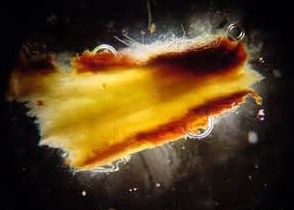
Humans and animals depend on plants for their food supply and ultimately for their survival. When diseases threaten crops, a high-quality, affordable food supply is placed at risk. For growers, plant diseases can reduce crop yields. For consumers, reduced crop yields can drive higher food prices. Plant pathology research holds enormous implications for a sustainable food supply.
Florent Trouillas, who was named UC Cooperative Extension specialist in the Department of Plant Pathology at UC Davis and the Kearney Agricultural Research and Extension Center last year, explains the bottom line of most concern to growers.
"Once we identify a disease causal agent, a main question remains from growers. What growers really want to know is how to control the disease and prevent its spread to new healthy plants; they look to the University of California for solutions," Trouillas said.
A crisis in the food production system can impact other areas of society as well. In fact, history is filled with examples of how plant diseases influenced economies, environments and human societies.

Another historical illustration of plant pathology research occurred in the 1920s. The most common trees in the forests of the United States at the turn of the century were the majestic American chestnuts. The trees generated income for humans and the timber industry, served as a food source for people and animals, and provided habitat for wildlife. Then the trees started dying, until by the late 1920s, they had become the first tree in modern times on the brink of extinction. Plant pathologists were particularly adept at identifying plant diseases by this time and diagnosed the Cryphonectria parasitica fungus as the cause of the chestnut blight. By preventing the extinction of the pivotal species, plant pathology had a direct impact on the economy and the environment.
More recent major plant disease outbreaks in the United States involving plant pathology research have included Sudden Oak Death with devastating effects in California and Oregon forests, pitch canker killing California native pine species, and citrus canker in Florida, which has had a huge economic impact on the industry.
Veterinarians treat diseases in animals, physicians in humans. Trouillas describes the role of plant pathologists in similar terms. “We study the pathology of plant systems. Plant pathologists treat plants," he said.
Healthy plants ensure a sustainable food source and habitat for so many other organisms, including the human species.
Is there a potato in my coffee?
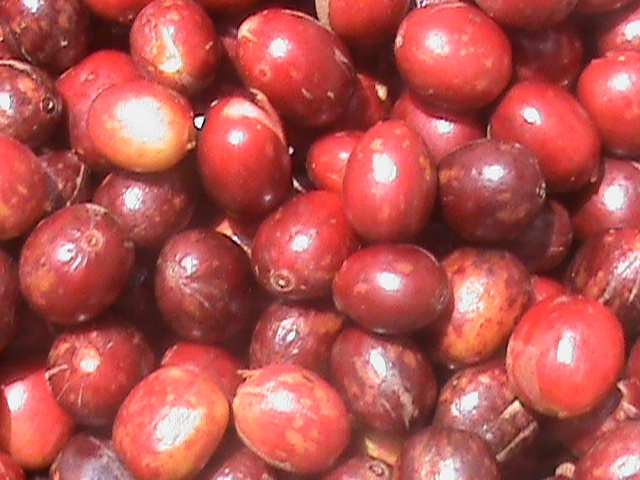
So pernicious is PTD that its occurrence can downgrade the value of the entire crop by a fourth or a third. Worse yet, PTD is only apparent after processing, roasting, grinding and brewing, and can occur long after the coffee has been shipped abroad.
Thought to be caused by chemicals produced by microbes that gain access to the coffee cherries by way of a stink bug called antestia, PTD has gained the attention of an international effort, called the potato taste project, that for two years has sought the cause and cure for the defect
Two undergraduate students at the University of California, Riverside, have played key roles in the potato taste project.
“Lauren Wong and Tony Truong made a key breakthrough discovery that led to our asking one of UC Riverside’s plant pathologists, James Borneman, to do a microbiome of coffee beans in Rwanda,” says Thomas Miller, a professor of entomology at UCR and one of the members of the international team working to mitigate the potential impact of the defect on Rwanda’s specialty coffee industry.

“We juxtaposed beans that had passed the stringent criteria against numerous batches of beans that had potato taste defect,” says Wong, who graduated in spring 2013 with a bachelor’s degree in biological sciences and is currently working in Miller’s lab. “When we roasted the beans, we found that all the potato taste defect microbes were killed.”
Truong examined whether the potato taste defect microbes can be manipulated to affect coffee taste.
“My experiment is a stepping stone to finding a solution for potato taste defect,” says Truong, who will graduate with a bachelor’s degree in biochemistry in 2015. “Are bacterial/fungal infections the source of the problem? Can the affected coffee beans be treated to remove the effects of potato taste defect? These are some of the questions I am exploring.”

Then, Miller stayed in Rwanda for two weeks that comprised meetings, workshops and numerous field trips. He has been in nearly daily email contact with Rwanda since.
“That visit helped us all get a better understanding of potato taste and its causes,” he says. “We gathered coffee bean samples for analysis in the United States and began collaborating with Rwandan scientists. We also assisted Rwanda in reaching out and making contact with people willing to help solve the potato taste defect problem.”
The culmination of the first two years of the PTD project will be a coffee summit on 1-2 April 2014 at NUR. The meeting is being organized by NUR and the Global Knowledge Initiative, a Washington DC, non-profit organization dedicated to finding solutions to problems in developing countries.
More information about PTD can be found at www.coffee.ucr.edu.
